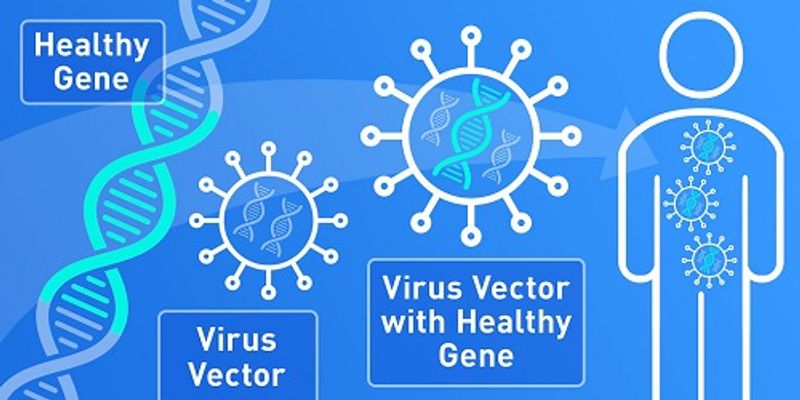Gene Delivery
Gene delivery is the process of delivering foreign genetic material ( e.g. DNA, RNA) into host bacterial cells ( called transformation) or host mammalian cells ( called transfection) using viral or non-viral vectors. Common uses include gene therapy.
-
FEB 04, 2015 | 12:00 PMC.E. CREDITSIn Chile, the regulatory context regarding animal use in research is very poor. A legal framework for Animal Care and Use Committees is practically nonexistent. Also, the chilean culture play...It is the often-ignored simple tips in rodent surgery that make the difference and help minimize postoperative complications and mortality. The presenter will use his years of experience to...Speaker: Marcel Perret-Gentil, DVM, MSPresented at: Laboratory Animal Sciences Virtual Event Series 2015
Some commonly accepted principles of biosafety include the strict adherence to standard laboratory practices and techniques, the use of safety equipment such as primary barriers and personal...
Speaker:
James R Swearengen, DVM
Presented at: Laboratory Animal Sciences Virtual Event Series 2015
FEB 04, 2015 | 7:30 AM
C.E. CREDITS
During my presentation, we will discuss:- Normal patterns of behavior (repertoire): social, food intake, territorial, agonistic, anti-predation, sleep and rest, play behavior, grooming, sex...
Speaker:
Marina Snitcofsky, DVM, MSc, PhD
Presented at: Laboratory Animal Sciences Virtual Event Series 2015
FEB 04, 2015 | 7:30 AM
C.E. CREDITS
The transportation of laboratory animals is a critical step in obtaining the proper strain of animal that best fits the researchers needs. Animal Extremist groups have made this transportati...
Soiled-bedding sentinels are not always efficient in detecting pathogens in rodent colonies. In this context, PCR-based testing can be more sensitive and is being advocated as adjunct to trad...
Speaker:
Mathias Leblanc, DVM, PhD, DES, DACLAM
Presented at: Laboratory Animal Sciences Virtual Event Series 2015
FEB 04, 2015 | 6:00 AM
C.E. CREDITS
Adherence to strict aseptic technique is vital to all types of animal models requiring surgical intervention from both scientific and welfare perspectives. Training of both new and experience...
Speaker:
Angela Kerton, B.VetMed Cert LAS MRCVS
Presented at: Laboratory Animal Sciences Virtual Event Series 2015
The era of omics has ushered in the hope for personalized medicine. Proteomic and genomic strategies that allow unbiased identification of genes and proteins and their post-transcriptional a...
Speaker:
Kimberly Kelly , PhD
OCT 29, 2014 | 3:00 PM
Survival rates for early stage non-small cell lung cancer (NSCLC) remain unacceptably low compared to other common solid tumors. This mortality reflects a weakness in conventional staging, as...
Speaker:
Michael J Mann, MD
The therapeutic utility of stem cells is rooted in an understanding -- and exploitation -- of their natural role from earliest development to lifes end. Their job is first to participate in o...
Speaker:
Evan W. Snyder, M.D., Ph.D., F.A.A.P
Presented at: Neuroscience Virtual Event Series 2014
The therapeutic utility of stem cells is rooted in an understanding -- and exploitation -- of their natural role from earliest development to lifes end. Their job is first to participate in o...
Speaker:
Evan W. Snyder, M.D., Ph.D., F.A.A.P
Presented at: Beckman Coulter Life Sciences Virtual Trade Show
Sponsored By: Beckman Coulter Life Sciences, Beckman Coulter Life Sciences
Sponsored By: Beckman Coulter Life Sciences, Beckman Coulter Life Sciences
Laboratory rats and mice are the most used animal species in scientific research, but still having a lot of information available about them, there are many places in Latin America where ther...
Speaker:
Carolina Mourelle, LATG
Presented at: Laboratory Animal Sciences Virtual Event Series 2014
FEB 06, 2014 | 3:00 PM
C.E. CREDITS
Informatics and internet are widely accepted tools in education and research. In the past decades new teaching and learning strategies have been developed and implemented. E-learning was def...
Intravascular catheterization access for injection and sampling is one of the most common experimental surgical procedures.Catheters and ports have been designed to reduce the problems of occ...
Speaker:
Oscar A Bermeo Blanco, DVM, RLATG, SRS
Presented at: Laboratory Animal Sciences Virtual Event Series 2014
























